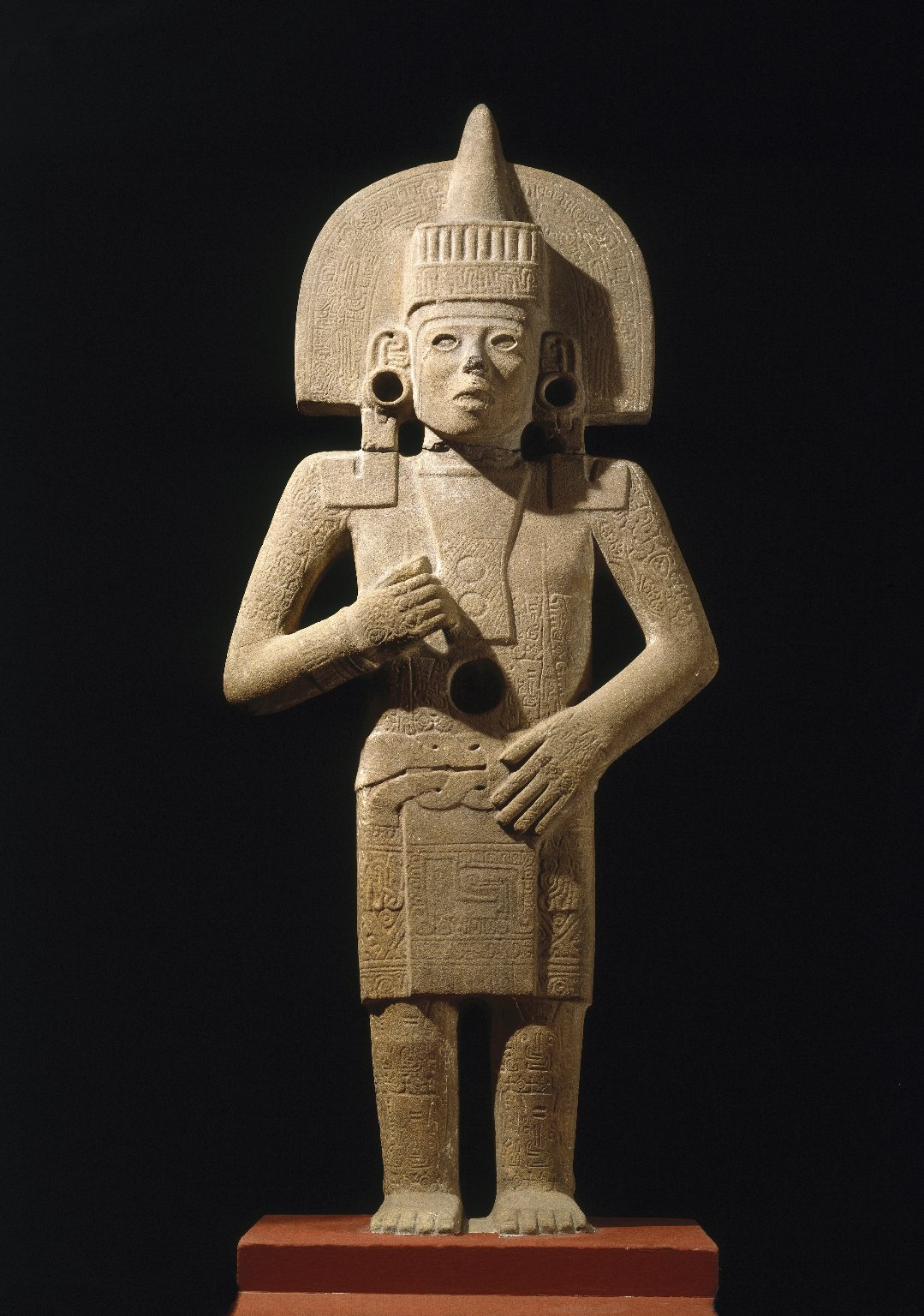Ehecatl on:
[Wikipedia]
[Google]
[Amazon]
Ehecatl ( nci-IPA, Ehēcatl, eʔˈeːkatɬ, ) is a  Since the wind blows in all directions, Ehecatl was associated with all the
Since the wind blows in all directions, Ehecatl was associated with all the
pre-Columbian
In the history of the Americas, the pre-Columbian era spans from the original settlement of North and South America in the Upper Paleolithic period through European colonization, which began with Christopher Columbus's voyage of 1492. Usually, th ...
deity associated with the wind
Wind is the natural movement of air or other gases relative to a planet's surface. Winds occur on a range of scales, from thunderstorm flows lasting tens of minutes, to local breezes generated by heating of land surfaces and lasting a few hou ...
, who features in Aztec mythology
Aztec mythology is the body or collection of myths of the Aztec civilization of Central Mexico. The Aztecs were Nahuatl-speaking groups living in central Mexico and much of their mythology is similar to that of other Mesoamerican cultures. Accord ...
and the mythologies of other cultures from the central Mexico region of Mesoamerica
Mesoamerica is a historical region and cultural area in southern North America and most of Central America. It extends from approximately central Mexico through Belize, Guatemala, El Salvador, Honduras, Nicaragua, and northern Costa Rica. W ...
. He is most usually interpreted as the aspect of the Feathered Serpent deity (Quetzalcoatl
Quetzalcoatl (, ; Spanish: ''Quetzalcóatl'' ; nci-IPA, Quetzalcōātl, ket͡saɬˈkoːaːt͡ɬ (Modern Nahuatl pronunciation), in honorific form: ''Quetzalcōātzin'') is a deity in Aztec culture and literature whose name comes from the Nahu ...
in Aztec
The Aztecs () were a Mesoamerican culture that flourished in central Mexico in the post-classic period from 1300 to 1521. The Aztec people included different Indigenous peoples of Mexico, ethnic groups of central Mexico, particularly those g ...
and other Nahua
The Nahuas () are a group of the indigenous people of Mexico, El Salvador, Guatemala, Honduras, and Nicaragua. They comprise the largest indigenous group in Mexico and second largest in El Salvador. The Mexica (Aztecs) were of Nahua ethnicity, a ...
cultures) as a god of wind, and is therefore also known as Ehecatl-Quetzalcoatl. Ehecatl also figures prominently as one of the creator gods and culture heroes in the mythical creation accounts documented for pre-Columbian central Mexican cultures.Miller and Taube (1993, pp. 70,84)
 Since the wind blows in all directions, Ehecatl was associated with all the
Since the wind blows in all directions, Ehecatl was associated with all the cardinal direction
The four cardinal directions, or cardinal points, are the four main compass directions: north, east, south, and west, commonly denoted by their initials N, E, S, and W respectively. Relative to north, the directions east, south, and west are at ...
s. His temple was built as a cylinder in order to reduce the air resistance, and was sometimes portrayed with two protruding masks through which the wind blew.
Notes
References
* * * * * *External links
{{Aztec mythology Aztec gods Sky and weather gods Wind gods Quetzalcoatl